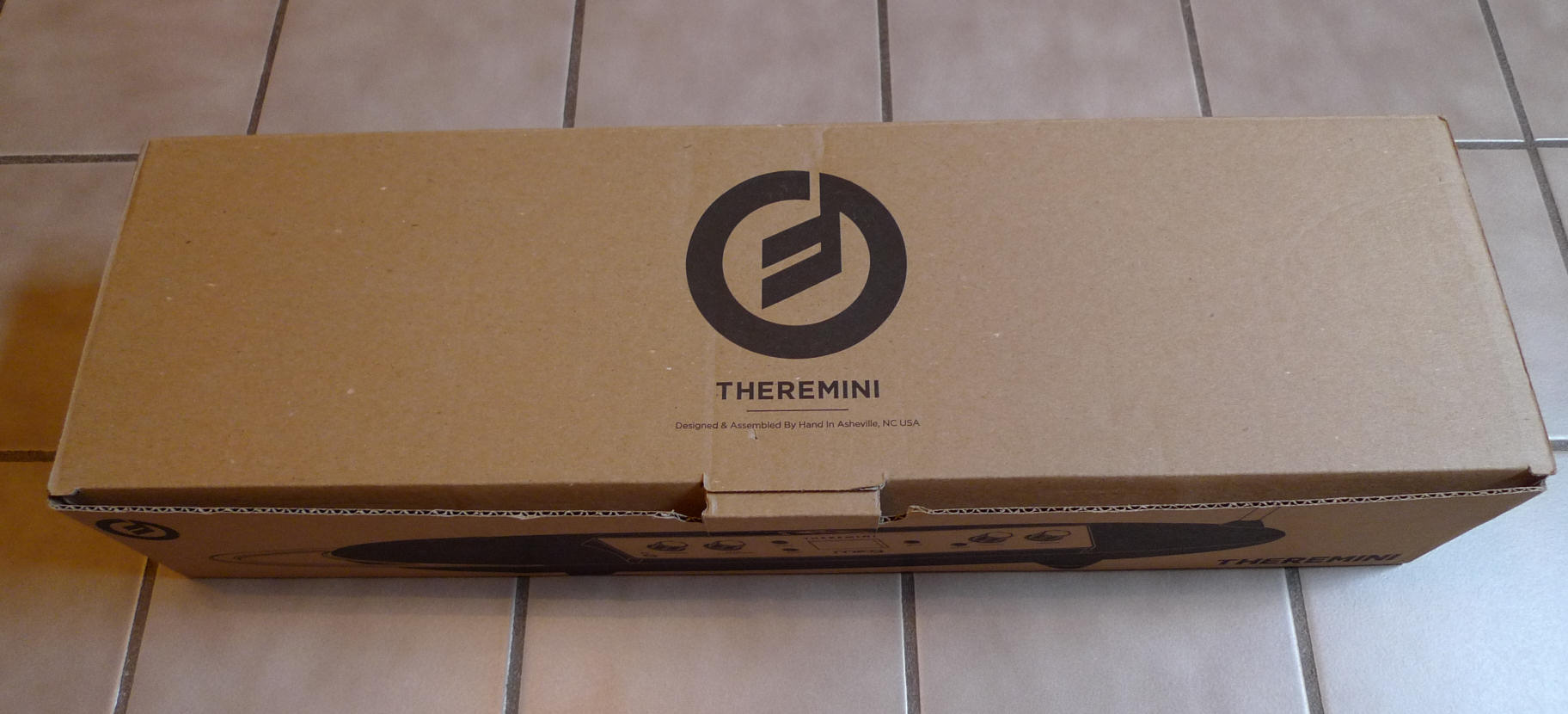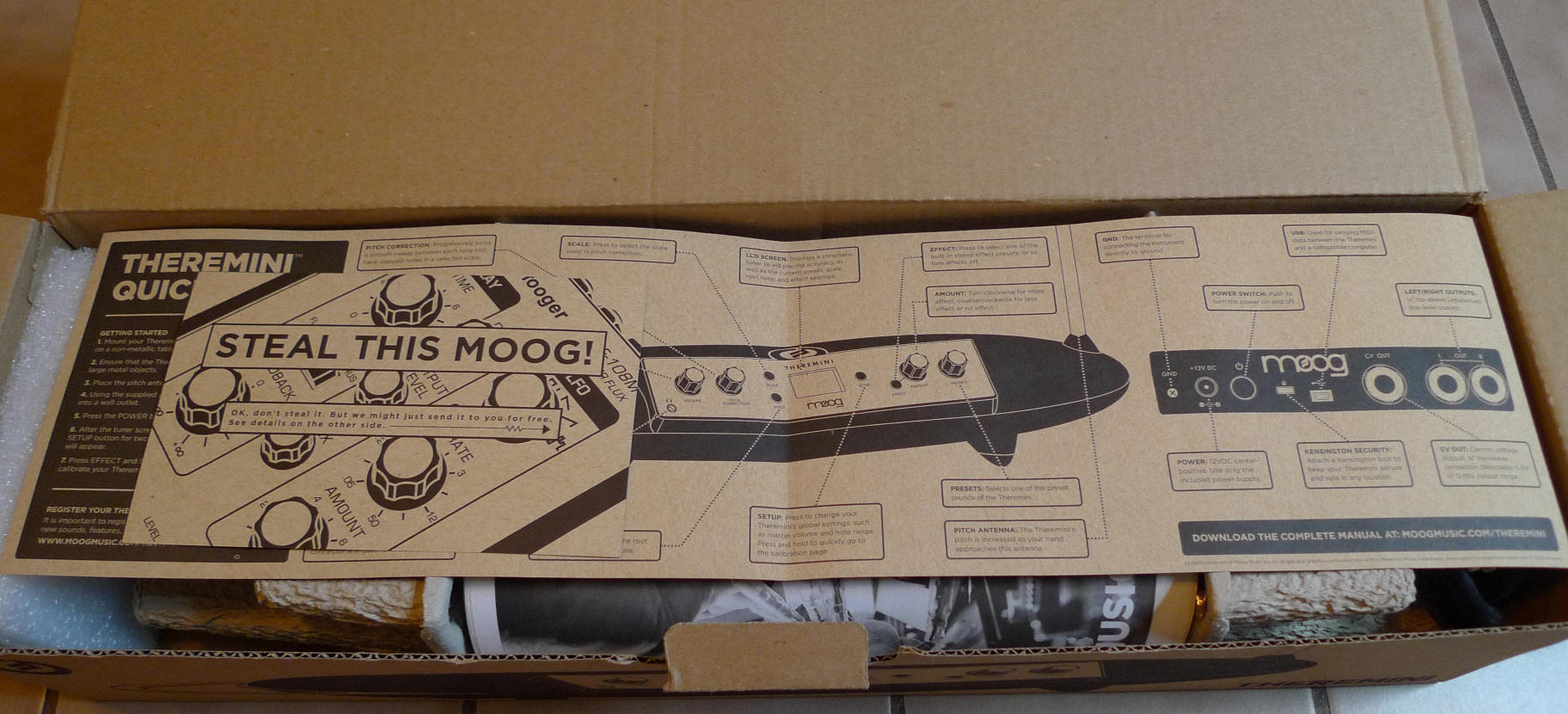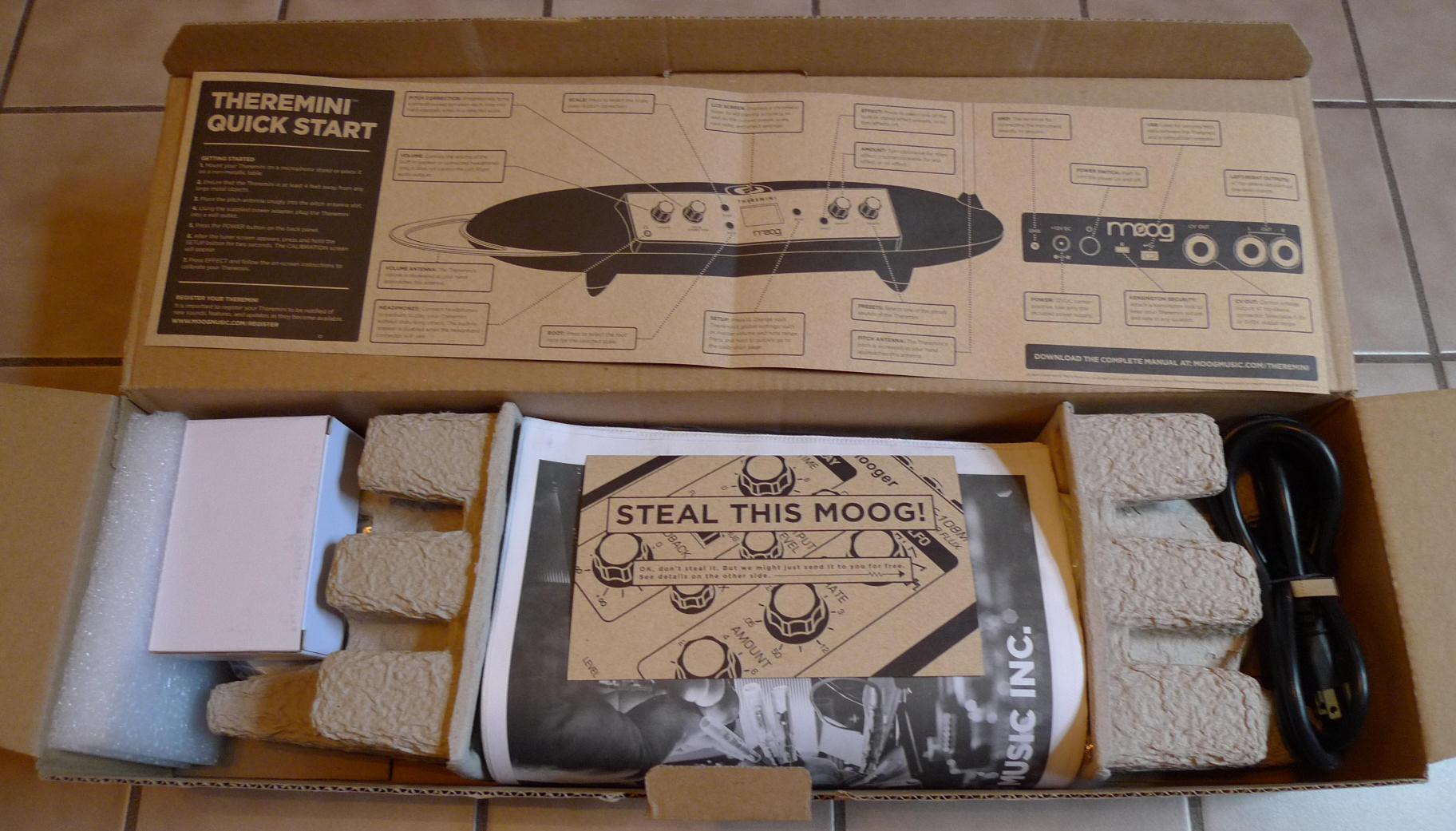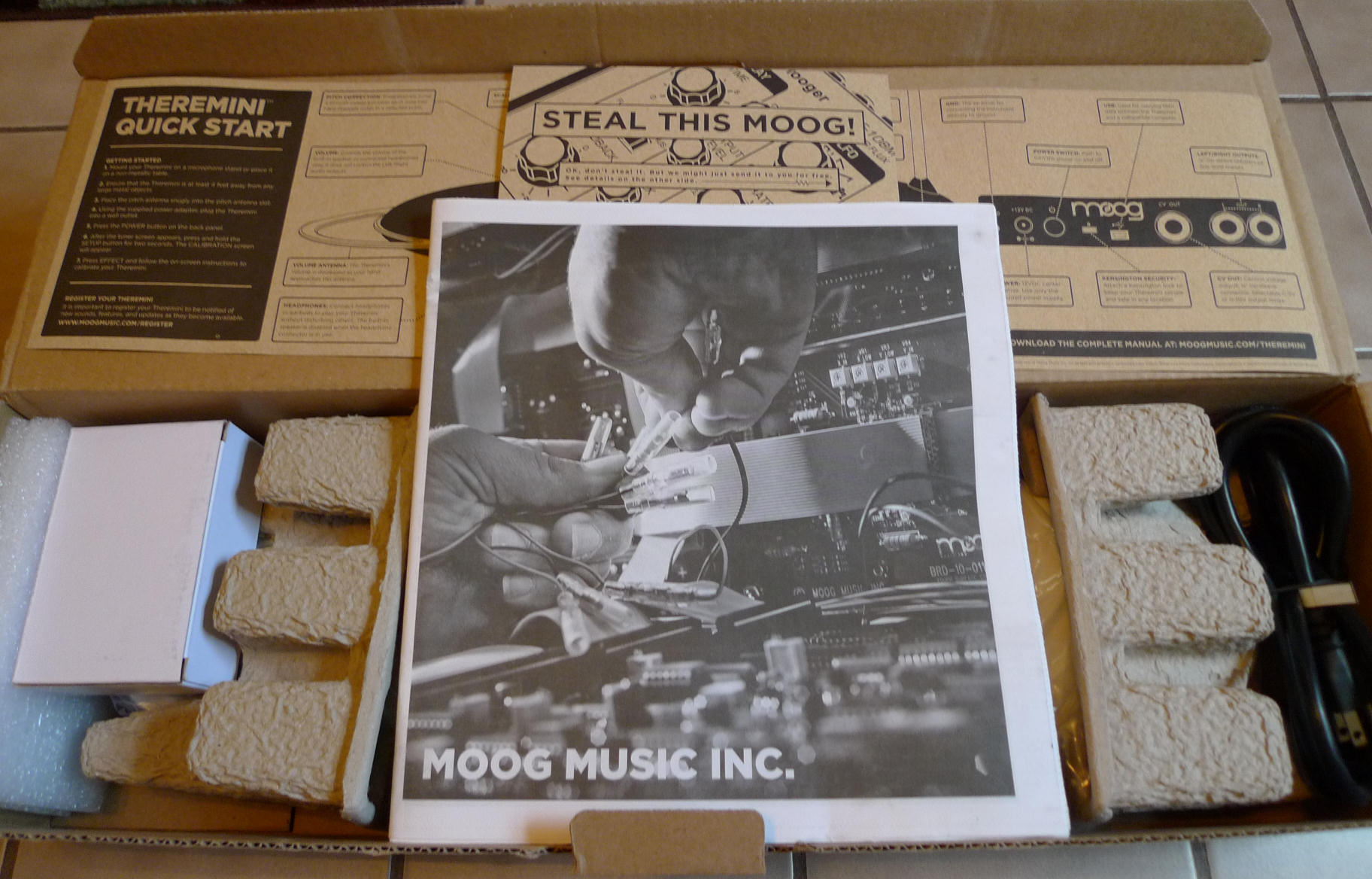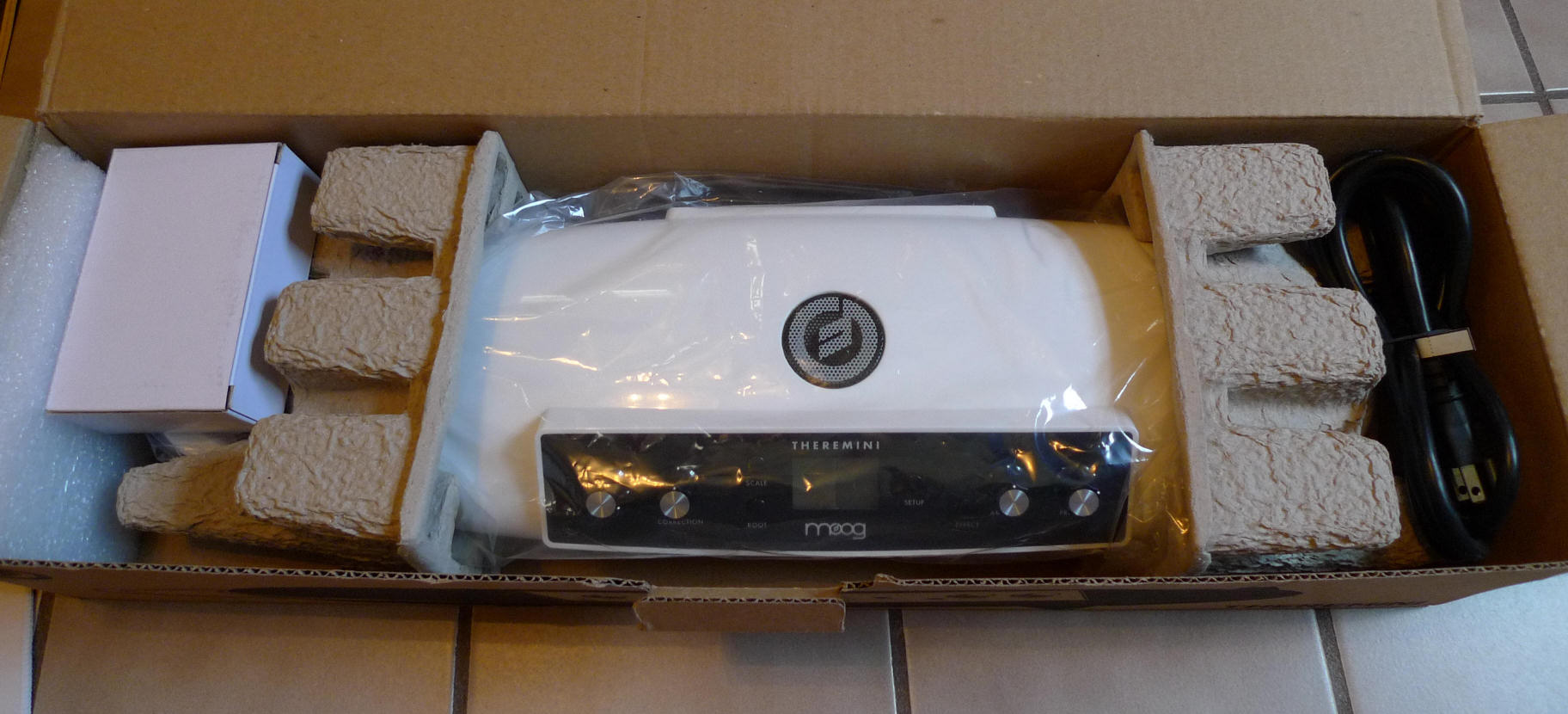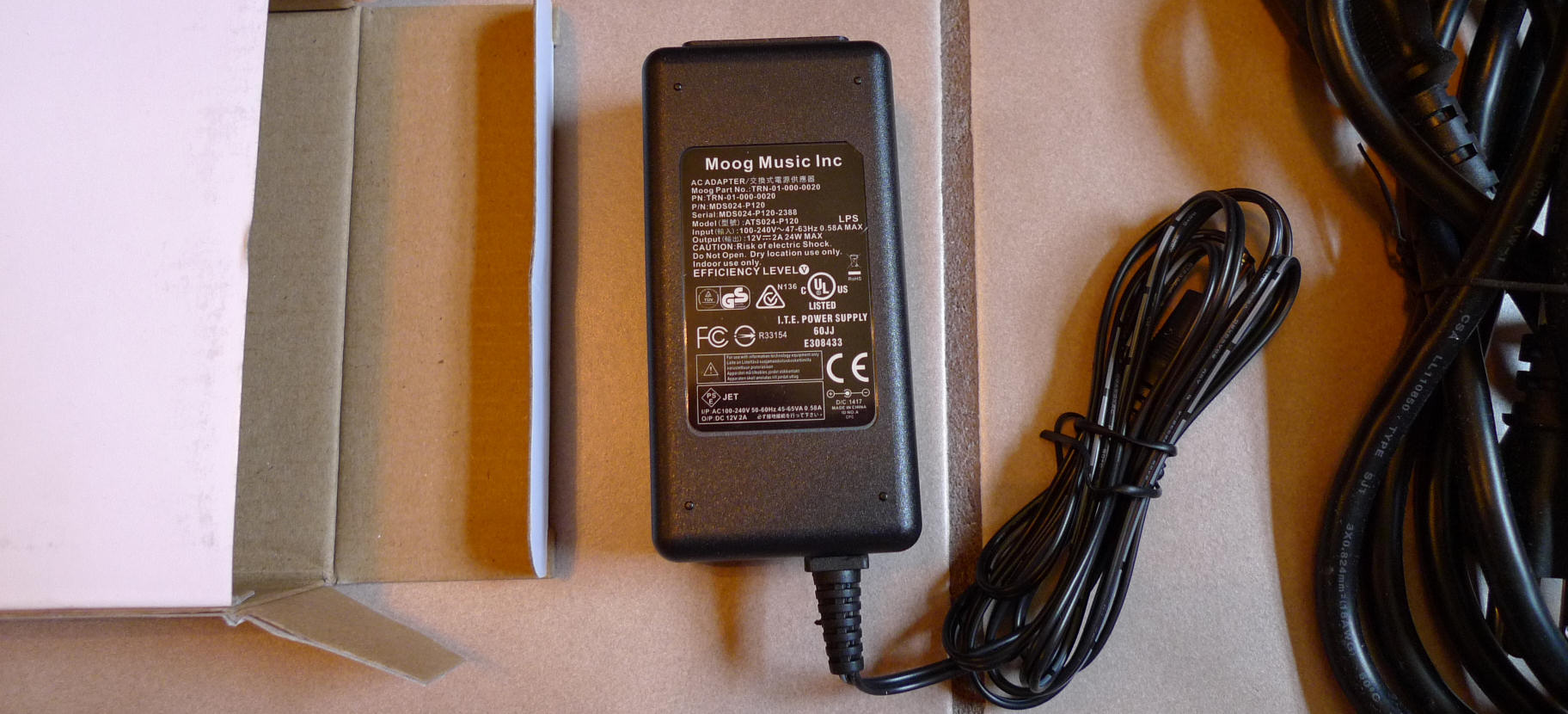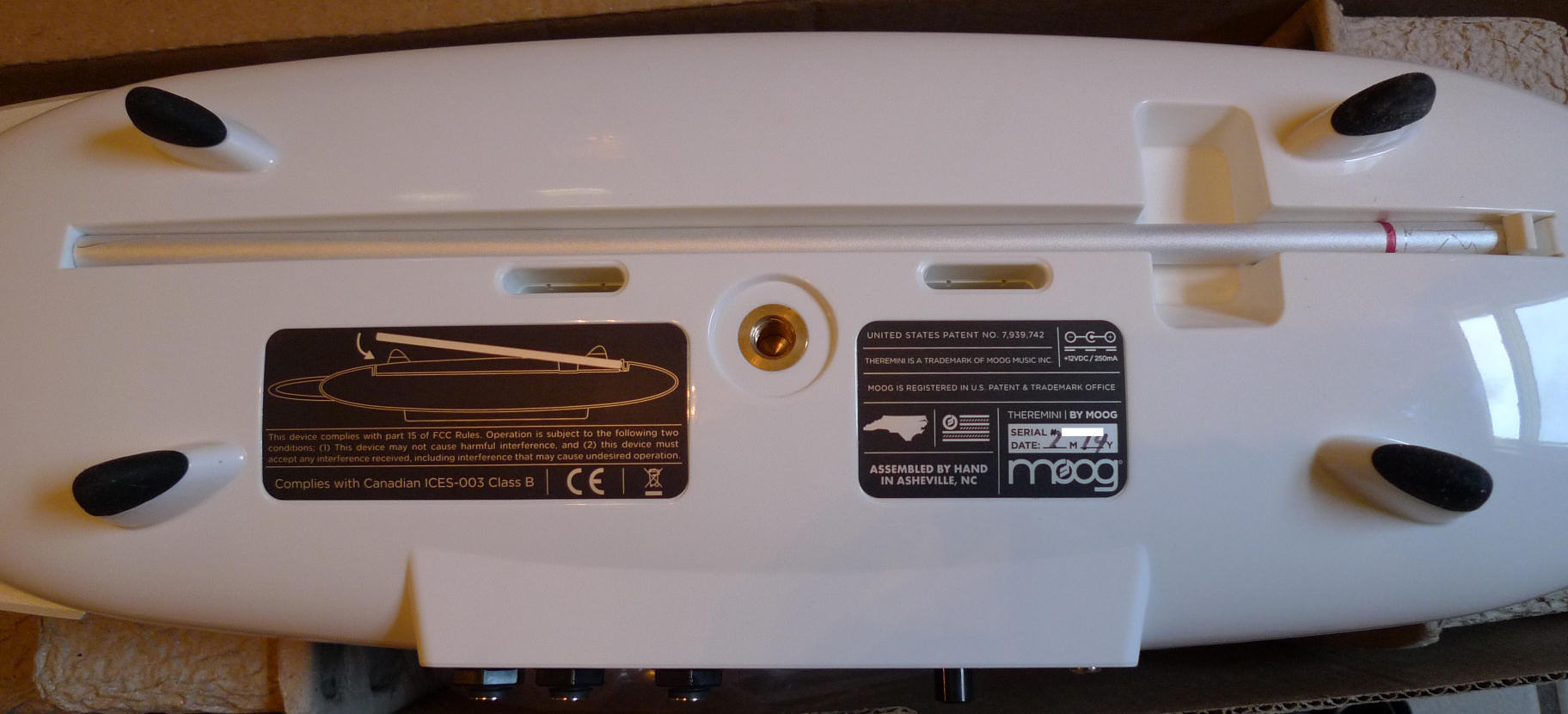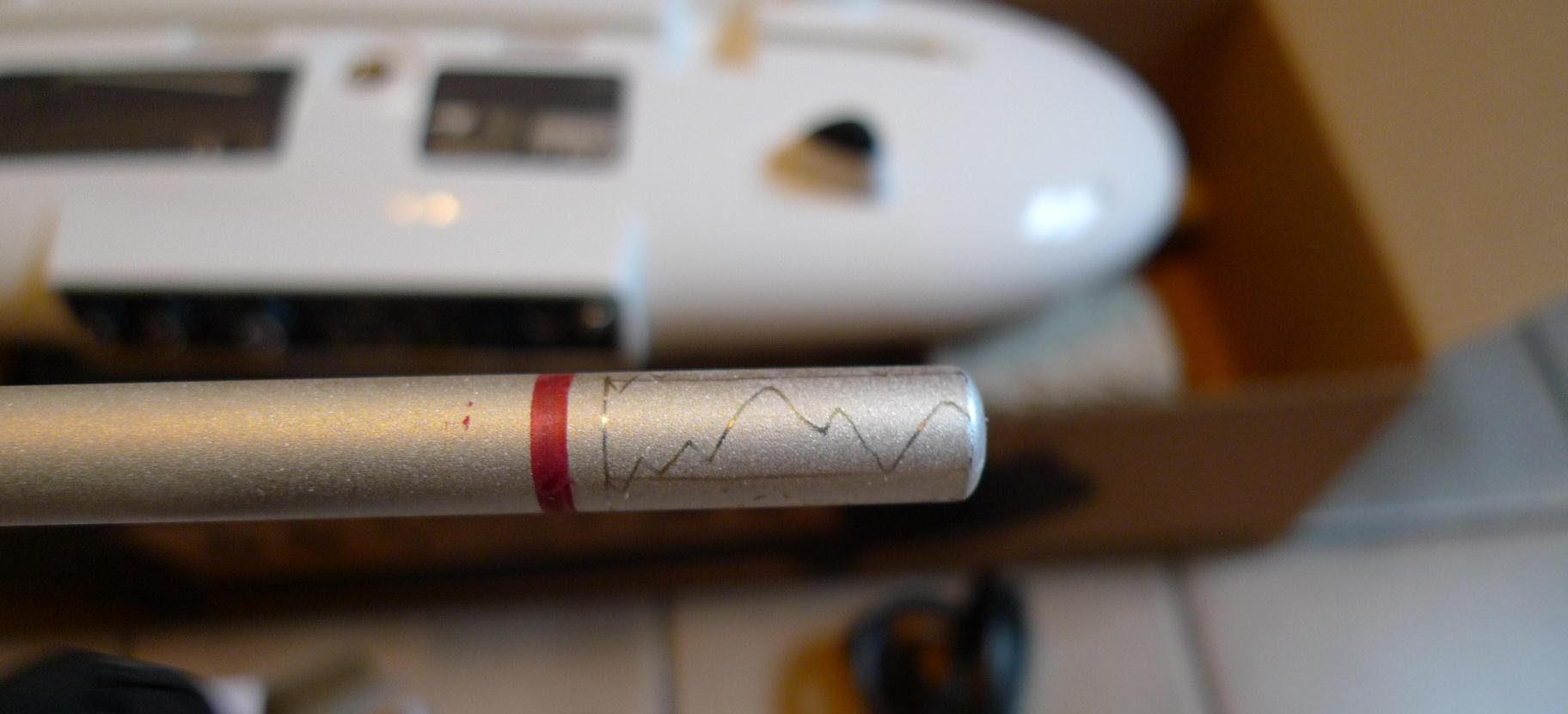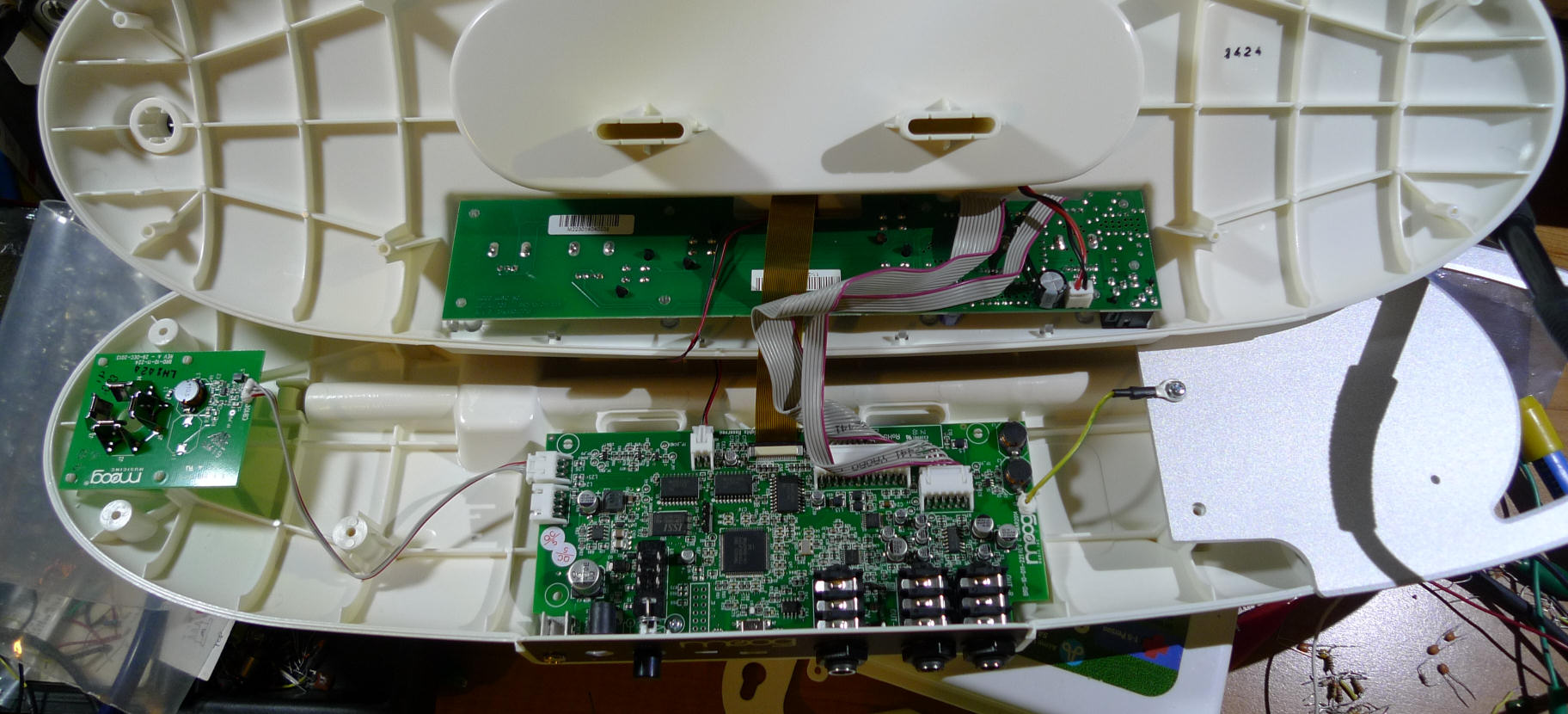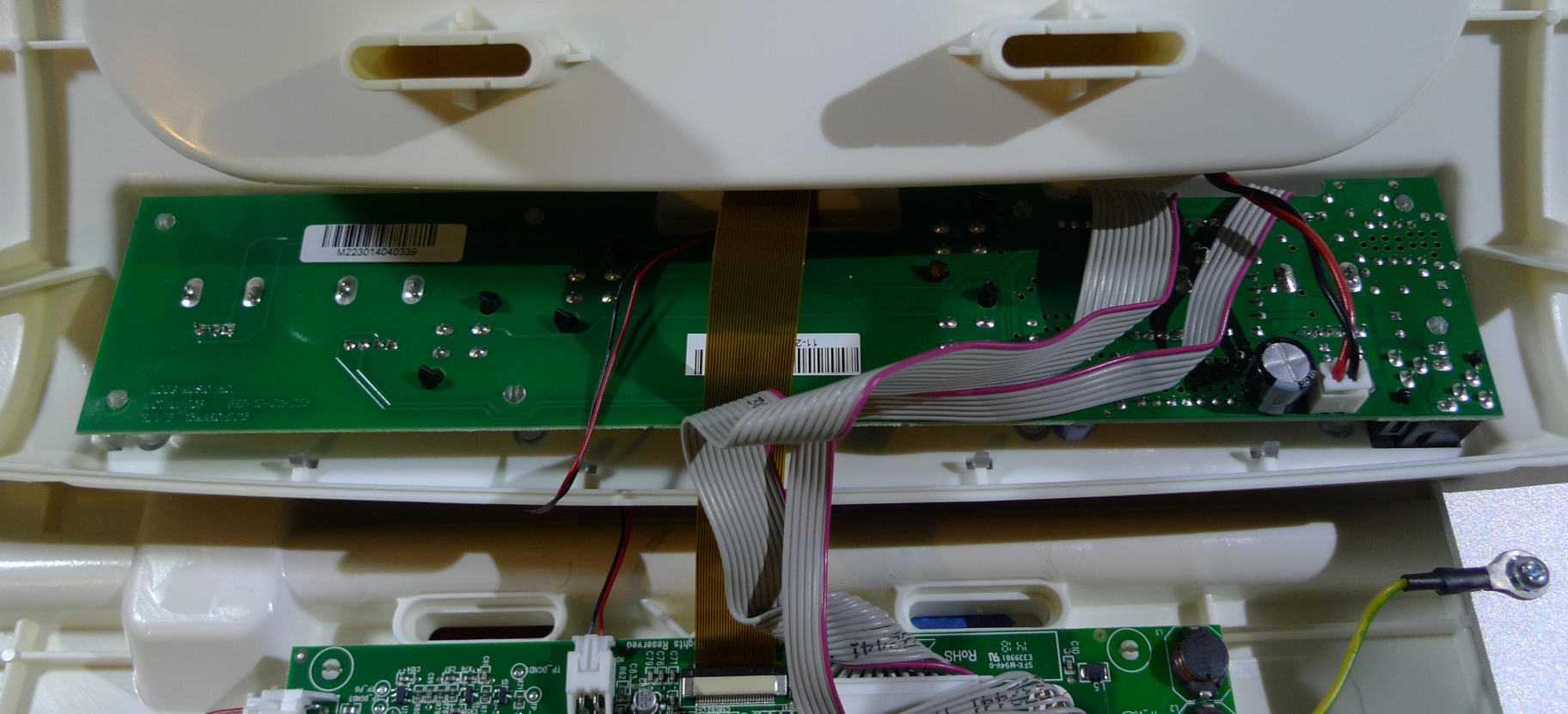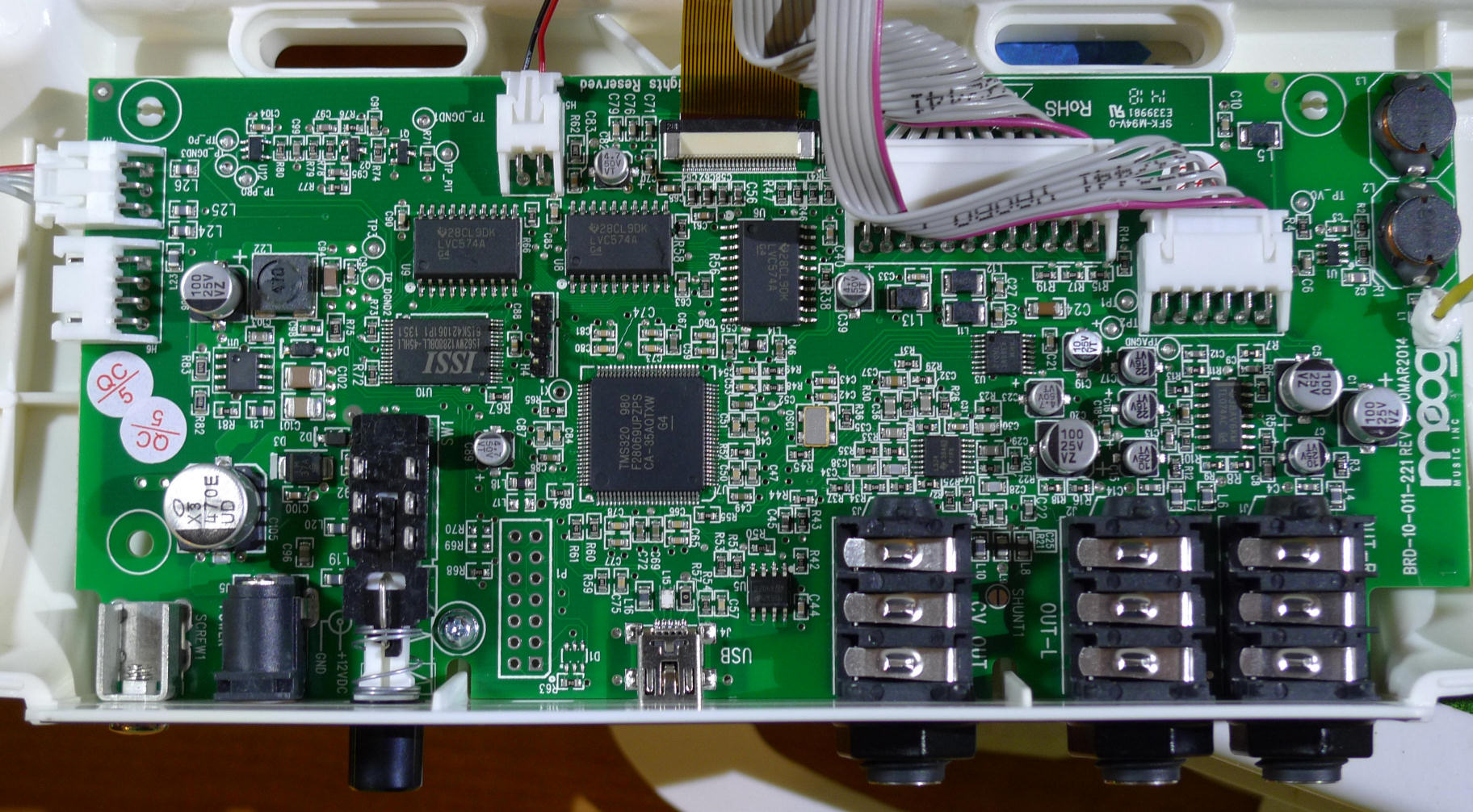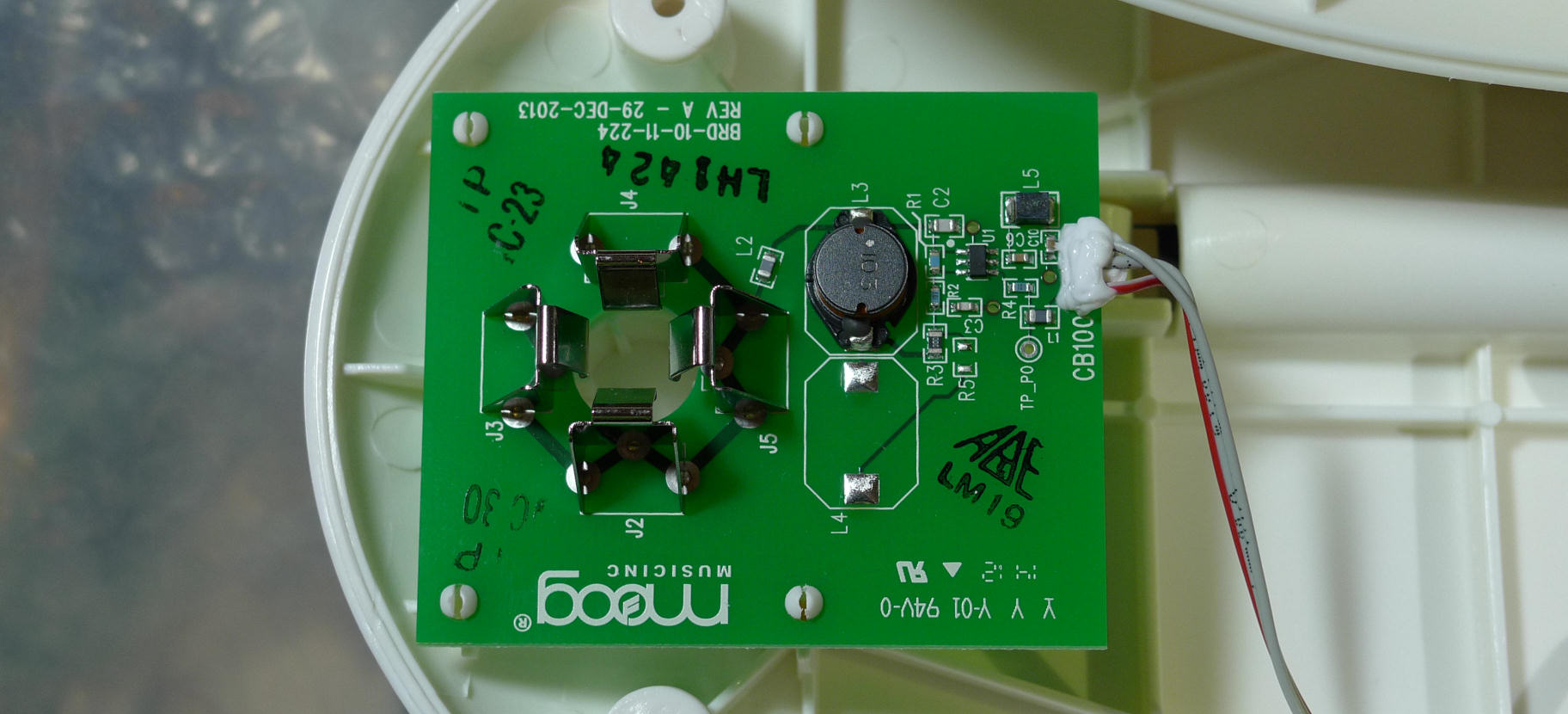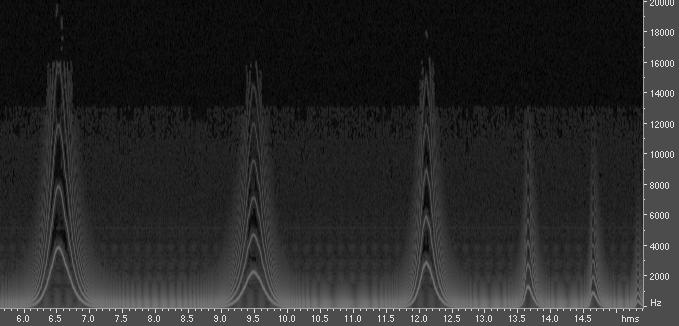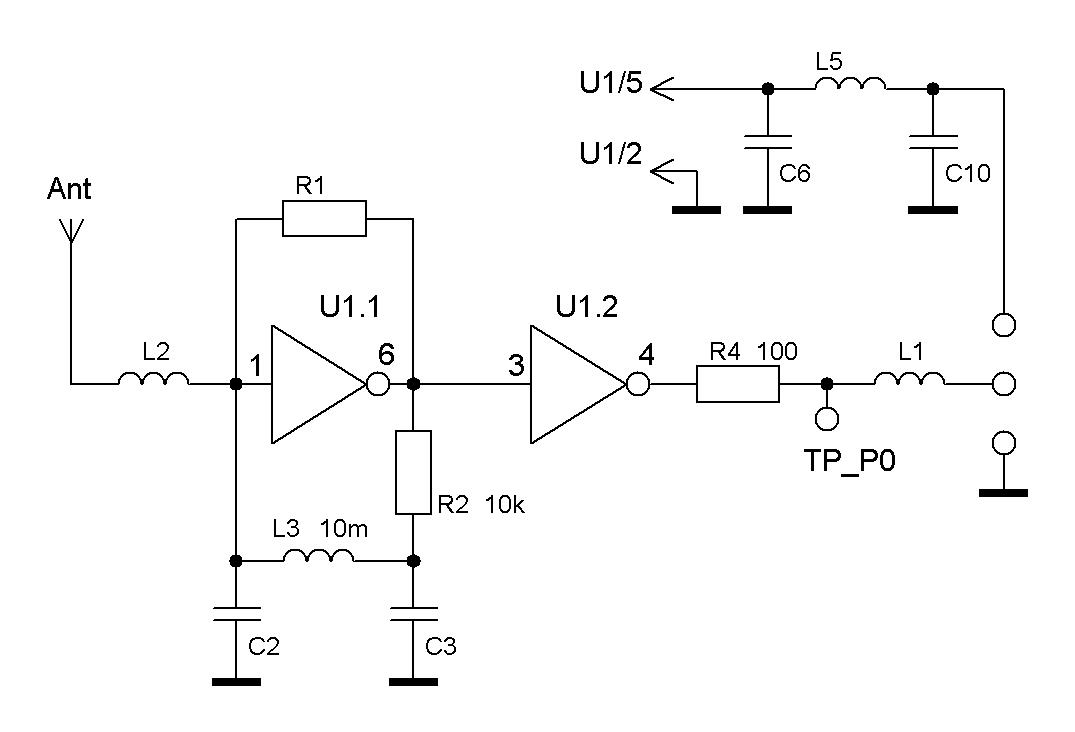"Ye Gods! Dewster, those are great pictures!" - FredM
I added a link above to the native res pix from my camera.
"4 battery clips for the antenna!"
Is that what those are... hmm.
"You say the linearity felt worse than the EWS, looking at the AFE that wouldnt surprise me at all! - I guess they just shoved a crude oscillator on the unit and thought they could get away with digital linearization.."
It's possible I'm doing something wrong with the setup (though I'm following the on-screen instructions) but the linearity is the worst I've ever experienced (not that I have a ton of experience with other Theremins). The pitch field is useable for playing tunes and such for maybe a foot out, after that it's so stretched nothing much happens. (To me the totally amazing thing about a good Theremin is getting good pitch change way far away from the antenna.) So maybe it's not too surprising we're not seeing a million videos of people playing tunes on these things?
And it gets worse, the Theremini has sticky pitch:
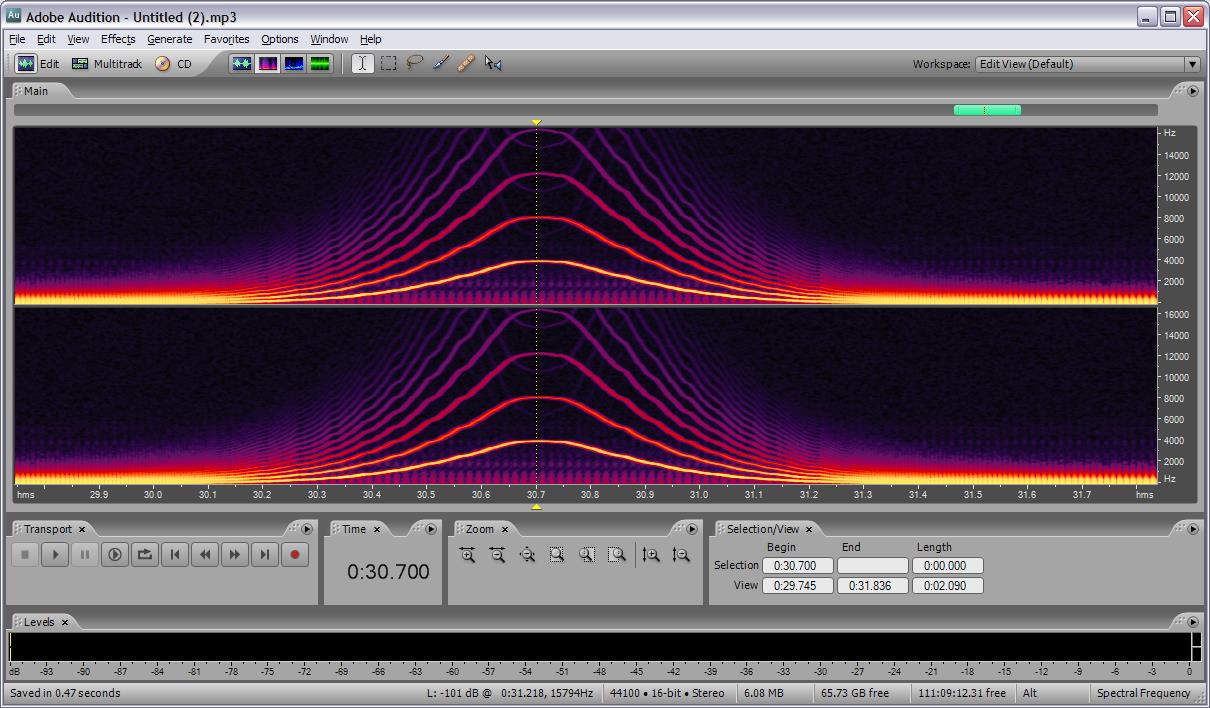
You can see it above quite clearly and hear it here: http://www.mediafire.com/listen/yjydd6exab7b1dg/Theremini_20114-08-06.mp3
This is the first patch "01 CLASSIC THRMN" with the pitch correction and effects knobs turned all the way counterclockwise, and the min / max pitches set to C1 / D8 (the max the Theremini will do). I'm holding my arm out and sweeping it in a semicircle by twisting my body so that my hand and the pitch antenna are closest about 1/2 way through the sweep, so as to produce the smoothest change I can. If I sweep my arm quickly the Theremini responds with a noticeably smaller pitch change than when I sweep my arm slowly, so they are likely filtering in there way below 1kHz.
I shouldn't jump the gun as I've only had a chance to play with it for an hour or so, but so far:
Pros: The voices and effects are fun, the control panel is nicely angled, the built-in speaker is handy, and the price is right.
Cons: Everything else you might expect from a good Theremin seems to be MIA, but it could be pilot error I suppose.
The calibration could be a lot more interactive, or at least give some kind of feedback other than a number on the screen counting down the seconds until the cal is done. There is one step I don't quite get either. Here is how the whole thing goes (with on-screen instructions):
1. Press SETUP button until you get to the CALIBRATION screen.
2. Press EFFECT button.
3. Press SETUP and move away 4', wait for 5 sec countdown.
4. Stand at arm's length and press SETUP, but no countdown happens, just the next screen.
5. Press SETUP and place hand near pitch antenna, wait for 3 sec countdown.
6. Press SETUP and place hand far from pitch antenna, wait for 3 sec countdown.
7. Press SETUP and place hand near volume antenna, wait for 3 sec countdown.
8. Press SETUP and place hand far from volume antenna, wait for 3 sec countdown.
I suppose in step 4 they are just asking you to get back into playing position, but it's a little confusing.
====
For 290kHz and 10mH, I calculate 30pF for simple LC resonance on the pitch side oscillator.
====
Gotta hit the hay, probably won't be posting much in the next few weeks, but will try to check in if/when I can.
[EDIT] Just tested the power supply brick with a DMM: there is a short between the outer 12V barrel contact and the AC ground (which is how they establish the operating ground for the Theremin circuitry).


